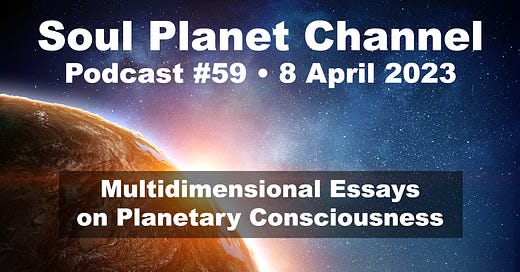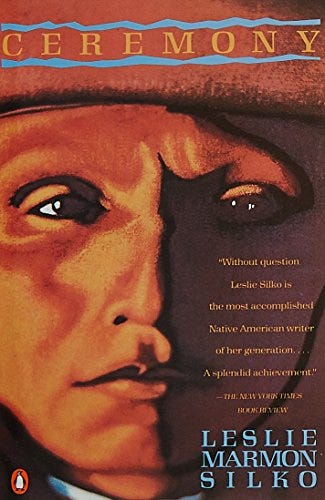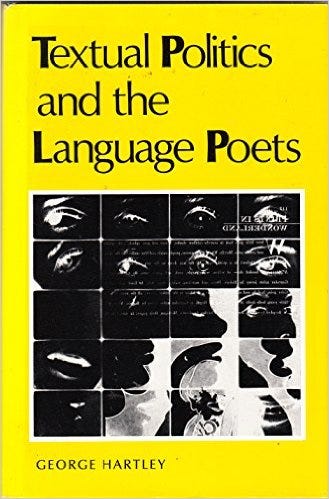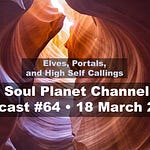Faeries, come take me out of this dull world,
For I would ride with you upon the wind,
Run on the top of the dishevelled tide,
And dance upon the mountains like a flame. — W.B. Yeats
On the 31st of March 2023 I submitted a proposal to the Arts Promotion Center of Finland. I applied as a lifelong writer of Creative Nonfiction, hoping to continue my work in creative essays and books while focusing on a variety of mystical ventures and obsessions.
This very Substack project that I call Soul Planet Channel was one of my primary points of reference in the proposal, for I hope to continue using this medium as the testing ground for my shamanic explorations in geomancy. It occurred to me that the material I presented there would also serve well as a kind of overview of where I’ve seen this blog podcast take me in the past year and how it animates my future and my past. For I discovered that all of my writing throughout all of my career has been focused on various quests for heightened consciousness.
Whether my focus at the time had to do with Marxist theories of ideology or avant-garde poetic notions of defamiliarization or shamanic notions of communications with the spirit world, all of that work, I came to realize, has always been focused on the possibilities for expanding our consciousnesses in order to create a better world for ourselves and for the planet as a whole.
Here in this post I will present an elaborate version of what I had written in my proposal in order to give you and me a sense of that life project so far.
I am Gabriel Hartley, and this is episode #59 of my Soul Planet Channel for the 8th of April 2023. Today’s episode is entitled “My Arts Grant Proposal—Multidimensional Essays in Planetary Consciousness.”
As with all forms of social media these days, if you like this post, please hit the like buttons, share it with your friends, and become either a free or paid subscriber. If you wish to help me out in this work but don’t want to sign up yet for a paid subscription, you can make a one-time donation to this project by clicking the “Buy Me a Coffee” link. In any case, thanks for being here and reading and/or listening to my message!
/////////////////
My plan for this Taike Arts Grant in Literature is to produce a variety of ongoing interrelated projects in creative nonfiction (essays and books). Writing multiple works simultaneously, I see each of these works as part of a much larger life project of what could be called philosophical mysticism or, with a slight inflection, geomantic poiesis. This work is intimately hybrid, taking the form of travel narrative, experimental notes, multidimensional dialogue, spiritual meditation, and (to coin a phrase) poetic habitation. I will try in what follows to give you a sense of what I mean by all these rather unusual terms. As my Substack and Wordpress essays and podcasts show, most of my current work involves mystical investigations into the ancient sites in my own backyard. Here I am continuing the sacred sites work I had done in the U.S. since 2010 (for example, my essay in Journal of Contemporary Shamanism on Kachinas that I met in New Mexico). My narratives of otherworldy engagement inform these latest creative nonfiction works. Here my earlier challenges to allegoresis and academic skepticism form the basis of my own literary stories.
I make these concerns a little clearer when I write the following in my discussion of Robert Frost’s poem “A Star in a Stone-Boat”:
The poem seems to gesture towards without ever mentioning the relational ethos of the communal stone workers of the past who built the complex sacred structures of Stonehenge, Newgrange, Chaco Canyon, and Machu Picchu—aware of the importance of appeasing those Spring-like forces that do not love a wall if it merely separates one human from another. The speaker of ‘Mending Wall’ seeks to mend entire modes of consciousness that remain deaf to the mischievous call of Spring in us that recreates spaces in our walls through which two can pass abreast once more.
If we take this image—worthy of William Blake—seriously for a moment, what a miraculous shift in earthly consciousness are we allowed to witness. The speaker, recognizing his own bodily energetic kinship with such fallen stars, picks this particular one up, spins it in his palm, and creates a marvelous glowing electrical continuum that in itself illustrates the human role of serving as the bridge between heaven and earth. In these brief moments of transcendental connection, this mad local star handler becomes the microcosmic embodiment of our universal cosmic dance.
My Underlying Message
In all of my work over the past dozen years or so, I have come to a firm conviction in what I could now state as my primary credo: All people, all species, all beings (including rocks and oceans and quantum particles) in their infinite variety at root are singular—a physical-spiritual manifestation of our planet as an infinitely evolving singular complexity. We are all expressions of a unified living planetary consciousness, of a complexity-in-singularity. Such a recognition of this intimate planetary identity, I believe, helps us to reduce our drive to war and competition ands all things driven by our illusion of separation. Overcoming this illusion allows for greater unified cosmic consciousness. And exploring the infinite dimensions of this singularity-in-complexity has been my goal for over a decade now and will continue, I imagine, until my dying day.
Teaching as Engaged Art
Much of my earlier writing grew directly out of my teaching as a Professor of English Literature and Language. For roughly four decaades I spent my time teaching literature and creative writing to students from eighth graders through PdD candidates. My classes often explored the bounds of human imagination in tales of encounters with non- or extra-human beings. From ancient sacred texts to fairy tales to classical literary works to contemporary movies, the human imagination has found a wealth of ways to explore experiences with fairies, elves, angels, and ETs. This work led to my presentation entitled “Believing in Fairy Tales,” later appearing in my Soul Planet Channel project, in which I wrote the following key paragraphs:
What if I, like Morpheus in the Matrix movies, were to suggest that you might be living an illusion and that, like Nero, you could choose to take the red rather than the blue pill? What if the world of fairy tales was actually the real world and what we call real is a socially accepted fantasy? And that this might be as good a time as any to travel down that rabbit hole?
Or what if we were to take Joseph Campbell seriously and suppose that we are suffering from the illusion of separation, and that even this distinction between the real world and the fantasy world—the red pill and the blue pill—is itself the ultimate illusion of the dualistic state of consciousness that prevents us from seeing the energies of eternity as they break through into time?
My classroom experience also led me write the essay “Allegoresis and the Eclipse of the Extraordinary,” where I explore how our tendency to read such magical accounts as allegories of this or that particular social condition tends to cut us off from the enchantment of the world around us. I later posted this essay in my Sacred Sites Project blog and plan to do a podcast version here in the future.
Essay as Poetic Habitation
In my current work I argue that the literary work provides space for our habitation within the multidimensional worlds provided by the work itself. Preceding the space outside the work is the space of the work. As we write our way into such works as readers, this poetic habitation provides us with an alternative mode of inhabiting the world we imagine to be outside the poem, which takes up residence in the space opened up as the poem in the world. As we read the poem, we create a space enveloping us in the flow and texture of the poem.
In another post and podcast in this Soul Planet Channel series I wrote the following two paragraphs that attempt to dive into exactly what I mean by Poetic Habitation:
This space that the poem creates and opens up for us becomes a habitable space. We can climb in and take up residence in this space made possible by the poem. This allows us to speak of modes of poetic habitation. Or, given the collective, social nature of language and the written-spoken media, maybe we should say poetic cohabitation. The poem creates a space where we can cohabit with the poet and with other readers and communities of people who might not have even read the poem but whose collective existence rises up as a fact of our newfound habitat. A poem about farm boys brings those farm boys into the present moment, the present space of the poem—they bring these various characters into presence from within the space and texture of the poem. The poem provides for the presencing of the outer world around us.
Or perhaps I should take a step back for a moment and begin instead by altering the statement to say that the poem provides for our presencing within the multidimensional worlds provided by the poem itself. Before the space outside the poem comes the space of the poem that we might come to associate with the poem’s inner space of being. This poetic habitation provides us with an alternative mode of inhabiting, of cohabiting in the world we imagine to be there already outside the bounds of the poem. The world outside the poem takes up residence in the space opened up by the poem, opened up as the poem in the world.
Reader as Avatar
Just as we in our imaginative capacities allow the worlds created in novels to shape the world around us, we can also identify with the characters of these narratives as well. We become avatars of these characters, living inside those consciousnesses just as we live in their most intimate environments. This is a mode of superconscious connectivity that grows out of our deepest innate faculties as an intutive collectivity.
In my discussion of Robert Frost’s poem “After Apple Picking,” which I taught each Fall in my poetry classes, I wrote the following passage that illustrates one way of imagining my notion of Reader as Avatar:
Were they both awake, the human and the woodchuck, we could join the poet in a communal mode of human-and-animal earthen consciousness that the draining nature of the world of desire-turned-work eclipses. And this remains the promise, ultimately, of the poem itself: despite the dropping-down-to-earth experiences that might from time to time trouble our sleep, in the end this superconscious mode of natural communication remains at our disposal. In the end, this consciousness provides its own gifts, a mode of cohabitation that suspends the categorical distinctions that normally frame our interactions with the world, despite the common remonstrations that such a mode of engagement is to be seen “as of no worth,” like the apples fallen on the earth. And in this sense, we become the ladder itself suspended still between heaven and earth, past and future, human and animal, as we drift dreaming into our human-woodchuck sleep with its hopeful lure of future rest.
I first came up with this notion of Reader as Avatar in an essay I had written in the Summer of 2017 on Leslie Marmon Silko’s novel Ceremony. I have taught this novel at least once every year between 1987 and 2017. Notably, the day after writing this essay I had a stroke. It literally blew my mind! I believe that my stroke was a result in part of the intellectual and spiritual breakthrough this essay represented for me. In the following paragraphs I give a clue to what I saw in this amazing novel:
In Silko’s novel we have a Keresan or Laguna Puebloan version of the Bible’s fiat lux. What Silko immediately presents us with is this situation, this situatedness, in which we find ourselves in relation to multiple cosmologies and cultural tellings of our global, earthly relations wherein a specific cultural telling implies all others in a universalistic fusion. And this earth-based mode of creative idealism, I argue, is perhaps the most significant element of Silko’s own thought production. For Silko as narrator serves as the avatar of Ts’its’tsi’nako and in this way creates the space wherein we her readers—at least those who find ourselves open to the ceremonial trajectory that Silko’s narratives set in motion—serve as Thought-Woman’s avatars as well. For Thought-Woman, who makes her abode in all indigenous cultures across all worldly places and times, is the divine prototype for our own function as creative individuals. And by “creative” or “Imaginal” I mean exactly what Henry Corbin means (as distinct from the “imaginary” or unreal) when he rescues these terms from the materialistic reductions of so-called modern scientific thought, for whom entertaining any such avataristic relationship to Thought-Woman, however she might be conceptualized, is forbidden from the start. And yet, my claim is exactly this: by means of our imaginative identification with Tayo and the spirits of Ceremony, we become the avatars of Ts’its’tsi’nako, Thought-Woman.
My argument is that once we enter into this chain of narrative substitutability, we find Thought-Woman on one end and ourselves at the other. We carry these stories within our own bellies, which is what the main character, Tayo, must learn. As readers, we must learn from him as he learns how to embody, to manifest through his very actions and bodily relations, the story that just might right the wrongs of a universe subject to the stories of malevolent witches, those who pervert our proper relations to the planet and our fellow beings within this planetary circuit—those who perpetuate the illusion of racial, spiritual, and political divisions. Silko’s Ceremony, then, just like her novels to follow, is the pedagogical tool or plan for Earth School, the scene of instruction for the development of planetary consciousness. The Four Worlds below our Fifth testify to the very real possibility of failure. What it means to pass or fail under such a curriculum (one which is itself perpetually in motion) is the focus of this writing of mine.
My Publishing History
Over the span of my academic career I published two books (Textual Politics and the Language Poets, Indiana Univ. Press, 1989 and The Abyss of Representation: Marxism and the Postmodern Sublime, Duke Univ. Press, 2003), as well as dozens of essays and a handful of poems (in print and in web format) in addition to my essay blogs.
My work in creative nonfiction began in 1986 with my engagement with the avant-garde group of North American poets known as the Language Poets. After my dissertation, which became my first published book, Textual Politics and the Language Poets, Indiana Univ. Press in 1989, I started writing hybrid essay forms combining prose, poetry, and dramatic elements. Beginning in 1988 with “Listen and Relate: Jackson Mac Low’s Chance-Operational Poetry,” these pieces appeared in both poetic and academic journals. Even in those academic journals I was still able to foreground the heightened literary qualities of my writing as a key component of the content I was working with. For example, after an aesthetic debate with the editors of Rethinking Marxism, I was able to publish my double-voiced multicolumn essay “Context Needs a Contest: Poetic Economy and Bruce Andrews’s ‘Give Em Enough Rope’” (1992). I published several more of my hybrid essays over the next several years.
In the mid-1990s I began work on an intensive aesthetic-philophical-political project that resulted in my second book publication, The Abyss of Representation: Marxism and the Postmodern Sublime, Duke Univ. Press, 2003, a work which attempts to highlight the potentials for beauty and depth in the language of “High Theory.”
External reflection? If Jameson had drawn a curved arrow joining the Symbolic text back to the Social or class allegory, and had thereby turned the whole schema into the vicious circle of positing and presupposing, then we would have a case of external reflection as the negative presentation of the Thing-in-itself lying beyond representation yet asserting its power positively as an idea shaping our circle of desire. But the real as posed here is nothing more than the limit immanent to desire, the limit that constitutes desire as such and imposes on us the endless process of figuration. I had asked earlier where the embodiment of the sublime, the sublime object, might lie in Jameson. The answer lies in the figure itself. The process of figuration is the embodiment of the radical negativity of reflection in the figure drawn to life by the symbolic act: each text produces the figure that will embody the point of contradiction and, through this embodiment, temporarily domesticate the immanent limits of desire; the series of failed figures gives body successively to the contradiction that makes perpetually impossible the realization of the fantasm; the semic logic of the text as it gives rise to a character system projects from out of the various points of possible identification the One, the master signifier, the signifier without signified that for however brief a moment embodies the negativity of the Real as the breakdown of all ideologies and yet through this subjectivation of substance provides the moment of possibility of subjectivity in all its ideological splendor.
— pp. 180-181
In the late 1990s I began a multimedia essay project employing digital web technologies and formats in my philosophico-aesthetic projects. These works include my web-based presentations “History of the Avant-Garde of Web Poetry” (2002), “Innovative Poet-Programmers of the World Unite!” (2002), and “Info Body Web: Sexual Biotech Politics in Mez’s Digital Poetry” (2002). During this time I also taught some courses on the aesthetics of web-based literatures.
From the late 1990s through the 2010s I dove deeply into the politico-aesthetic issues in multi-ethnic literatures, being especially interested in multi-lingual works of art such as Chicano poetry, which often produced Spanish and English hybrid forms (code-switching) common to everyday Mexican-American speech. This led to my third book manuscript, “Healing the Continetal Divides: A Meditation on Indigenism, Chicanismo, and Planetary Consciousness.” I published several hybrid essays related to this project such as “The Curandera of Conquest: Gloria Anzaldúa’s Decolonial Remedy” (2010) and “Chican@ Indigeneity, the Nation-State, and Identity Formations” (2012). Unfortunately, while I was working with a publisher for my “Continental Divides” manuscript I suffered a stroke in August 2017. As a result, I have only recently started considering resubmitting the manuscript for publication, having spent the past five years in recovery and in medical retirement here in Finland.
Luckily, even in medical recovery I have been able to continue developing another crucial aspect of my creative life project—my creative essay exploration of multidimensional modes of consciousness—which so far has been housed primarily in my blogs and podcasts. This is the project at the heart of my application for this Artist’s Grant and represents what I see as my true life’s work—exploring the philosophical and aesthetic implications of poetic consciousness, what has been referred to as the faculty of poiesis. One of my essays in this vein, “Kachina Visions and the Expansion of Cultural Identity,” appeared in A Journal of Contemporary Shamanism in 2014.
My Substack essay-podcast site (2022-present) is the home of this writing right now. At present I have been working through early drafts of what will become two or three books in the near future, including my project in what I call Poetic Habitation—my “translation” of the nature poetry of Robert Frost into my own visionary experiences here in Fiskars, Finland, including Episode 52, “The Solstice Hinge Between Death and Rebirth”—and my deep exploration of human and nonhuman modes of communication (as in Episode 41, “September Notes on Avatarism”).
CONCLUSION
A note to listeners of this presentation: As you will have noticed by now, I make many references to works that exist in other places. In order to help you get to those earlier works of mine, I have provided many hyperlinks in the webpage text version of this talk. I urge you to take a look at the online version if you want to see the actual works I refer to.
As a bit o a teaser, I’ll end now with a single line from one of my engagements in my poetic habitation within the poems of Robert Frost. This line comes from my essay entitled “Back Out of All This: On Robert Frost’s Poem ‘Directive.’” Again, I speak of Frost’s entry into the brotherhood of stone:
“Stone speaks to us in its lithologia like a story book, translating the voices of those now gone before us into their hauntological presencing.”
Links to My Current Platforms
· Soul Planet Channel, my Substack Podcast & Newsletter:
· Sacred Sites Project Wordpress Shamanic Blog: https://sacredsitesproject.com/blog/
· Sacred Sites Project Wordpress Poetics Blog: https://sacredsitesproject.com/poetics/
· Soul Planet Channel Chat Facebook Group: https://www.facebook.com/groups/1035531900752129
· Dragonheart-Sacred Sites Project Facebook Group: https://www.facebook.com/groups/dragonheartsacredsitesproject
· Groovdigit Author Files: https://groovdigit.com/authors/hartley/
· Professor Hartley YouTube Playlist: https://www.youtube.com/playlist?list=PLrNI85SsAsHPeXzJiHGBPpYCYKVdqDGk3
Music Credits:
Intro — “Kind of a Party” by the Mini Vandals
Interlude 1 — “Float” by Geographer
Transition Snippet 1 — “Beyond” by Patrick Patrikios
Transition Snippet 2 (multiple times) — “Glimpsing Infinity” by Asher Fulero
Outro— “Read All Over” by Nathan Moore




















Share this post